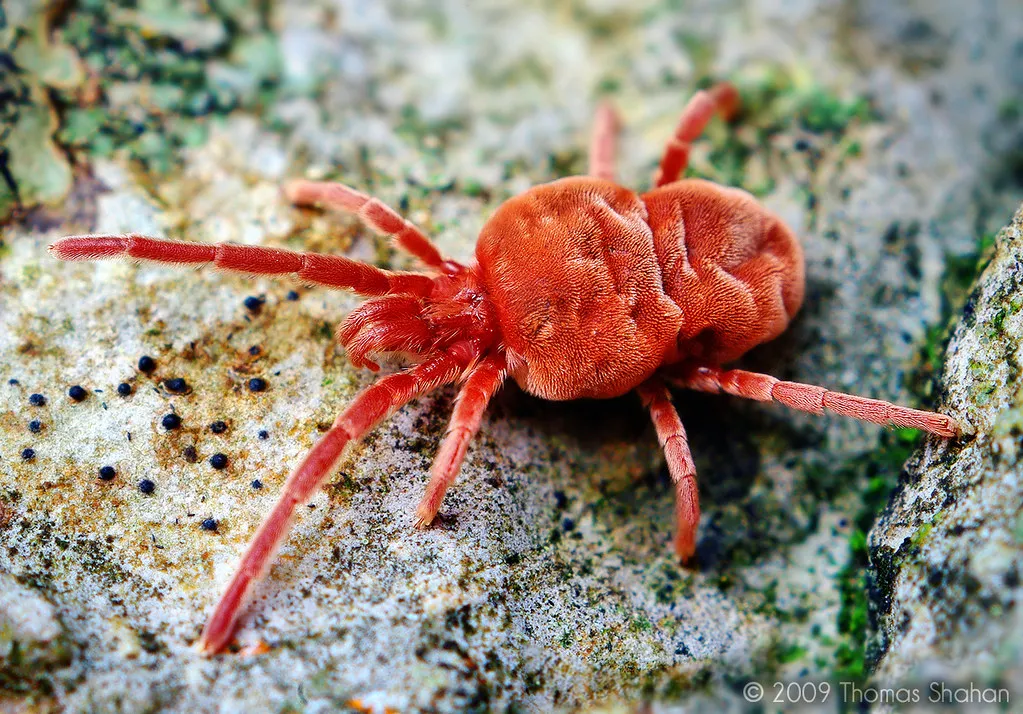Where Do Mites Live?
Mites are among the most successful organisms on the planet, due to their immense variety, hardiness, and unique adaptations that allow them to thrive in virtually all environments. They are widely found everywhere, including our homes and even on our bodies! Knowing more about mites and where they live can help us better understand how to control them and protect ourselves.
Types of Mites
The mite family is vast and diverse, as there are up to 77,000 known species living in every corner of the globe. Therefore, the habitats of each species can vary greatly. Broadly speaking, parasites like feather mites, skin mites, or mange mites live on or within a particular host species; while the predacious mites, like the spider mite, hunt and feed on many different types of small organisms like aphids and other arthropods.
Where Do Mites Live?
Mites live and feed in a wide range of habitats. Some of the most common mite habitats include:
-
- Plants: Mites can be found on and within plants, where they feed on the phloem cells, resulting in aesthetic and physiological damage.
-
- Animals: Parasitic mites live on or within an animal host, such as dogs and cats, resulting in various skin and fur problems.
-
- Indoors and Outdoors: Mites can be found anywhere indoors, from mattresses and furniture, to carpets and walls. Outdoors, mites can be found in soil, grass, leaf litter and various structures.
How to Get Rid of Mites?
If mites are causing problems inside or outside your home, there are a few steps you can take to get rid of them:
-
- Vacuum: Vacuuming is one of the best ways to remove dust mites from your carpets, furniture, and bedding.
-
- Clean: Regular cleaning and dusting of your home can help reduce the presence of mites in your living space.
-
- Treat: For more serious mite infestations, you may need to use a pesticide or insecticide product to help eliminate them.
Once mites are eliminated, it’s important to practice preventative measures to keep them from coming back. This includes keeping your home clean and regularly checking for signs of mite activity.
Understanding where mites live and how to get rid of them can help us better protect ourselves and our families from their various effects. Knowing more about our enemies—as insignificant as they may be—will give us an advantage, as prevention is often the best remedy against mites!
Mites are small arthropods that are widely distributed in nature. They can be found in many different habitats and can survive in extreme conditions. While mites can live on virtually any surface, there are some preferred habitats that they commonly settle in.
Mites that live in low-humidity areas often prefer to inhabit dry, sheltered spaces such as crevices and cracks in walls, floors, or furniture. These mites can also be found in carpets and upholstered furniture, where their small size provides plenty of places for shelter. They thrive in these locations as the dry air prevents them from becoming too wet, which can be deadly to the mites.
Mites that prefer humid environments are more likely to be found near damp sources, such as lakes, streams, garages, and basements. They can also be found in the soil and decaying plants, where they help break down organic matter into nutrients. This type of mite may also inhabit damp spots beneath furniture, in air-conditioning ducts, and in humid, dark areas around the home.
Dust mites, which are often a cause of allergies, are frequently encountered in mattresses and bedding. These creatures like to inhabit areas that provide plenty of organic material for them to feed on, such as dead skin cells and dust particles. They typically thrive in temperatures that range from 20 to 25 degrees Celsius (68-77 degrees Fahrenheit) with a relative humidity of 70-80%.
Outside of the home, mites can be found in virtually any situation. They are commonly found in gardens, where they aid in the decomposition of decaying organic matter, such as fallen leaves and dead wood. They can also be found in forests, deserts, underground caves, and anywhere else that provides some degree of shelter and dampness.
No matter where mites are found, it is important to note that they are an important part of the natural environment. They contribute to breaking down decaying organic matter, meaning they play an active role in the cycle of life.
In conclusion, mites can be found in virtually any habitat, ranging from dry, sheltered areas to moist and humid places. They are an important part of the natural environment and aid in the decomposition of organic material. It is important to note that, while mites can be found all over, they prefer certain habitats and situations that provide them with room to thrive.
Also Read: How to Check for Lice
Related: Flea Bites vs Scabies

